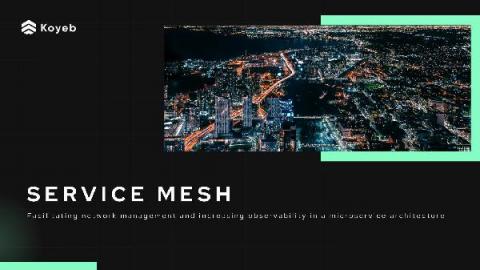Systems | Development | Analytics | API | Testing
%term
Scaling Cypress, TestCafe, Playwright, and Puppeteer Tests on Sauce Labs = SauceCon 2021 Demo
Deploying With Confidence Using Kong Gateway and Spinnaker
Change is the primary cause of service reliability issues for agile engineering teams. In this post, I’ll cover how you can limit the impact of a buggy change, making it past your quality gates with Kong Gateway and Spinnaker for canary deployment.
Service Mesh and Microservices: Improving Network Management and Observability
Whether you're transitioning away from a monolith or building a green-field app, opting for a microservice architecture brings many benefits as well as certain challenges. These challenges include namely managing the network and maintaining observability in the microservice architecture. Enter the service mesh, a valuable component of modern cloud-native applications that handles inter-service communication and offers a solution to network management and microservice architecture visibility.
Introducing Ably Asset Tracking - public beta now available
Over the past 18 months, as we’ve sheltered at home, the demand for global and last mile logistics, food delivery applications, and urban mobility services has skyrocketed. Realtime location data underpins much of the core value these applications and services provide. It enables delightful user experiences that make hungry end-users happy.
Report: The 5 main benefits you can expect from migrating your app to cloud CI
Our research finds that leaving Jenkins behind results in a higher return on investment, thanks to predictability of resource requirements and freed-up capacity. Read our new report focusing on the business impact of switching to cloud-based CI.
Managing From Home: Running Software Teams in a Remote-First World
Working from home, remote-first, asynchronous work. There are many ways to describe our new way of professional life. Much has been explored from an employees point of view, but how do leaders and managers deal with the new situation? We have a look at the challenges and needs of software engineering leadership.
Helix ALM vs. Doors Next
Helix ALM is an application lifecycle management tool, which includes requirements management, test case management, and issue management. It is applicable across a broad range of methodologies, including modern agile practices, traditional waterfall development, or a hybrid approach. Because it encompasses a broad scope of records and team activities, Helix ALM specializes in end-to-end traceability and configurable workflows.
Virtual Reality Retail: Next-Gen Shopping Experience
Virtual reality retail experiences are transforming brick-and-mortar shopping. With the global augmented reality/virtual reality (AR/VR) market expected to reach 1.6 billion by 2021, there is massive potential to expand into virtual spaces. Creating a virtual shopping experience helps both retailers and consumers. It can reduce overall operating costs and offer immersive experiences for consumers to try and customize before they buy. So how can retailers build VR in retail?










